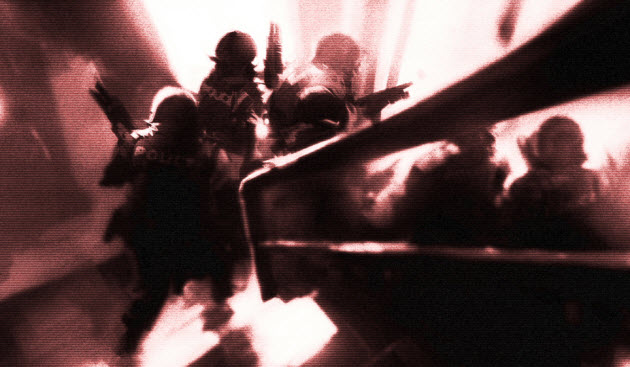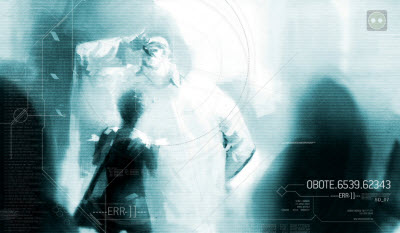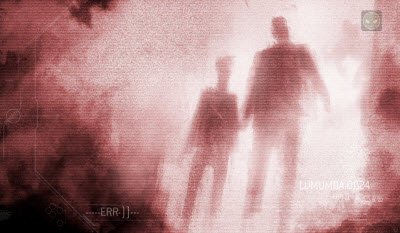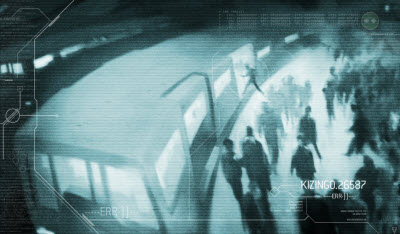 Microsoft’s Halo 3: ODST is flying off the shelves as hardcore gamers play the first-person shooter video game on the Xbox 360. Sales have topped 2.5 million units, or $125 million, in the first two weeks of sales. Those gamers would do well to pay attention to the hidden game within the game.
Microsoft’s Halo 3: ODST is flying off the shelves as hardcore gamers play the first-person shooter video game on the Xbox 360. Sales have topped 2.5 million units, or $125 million, in the first two weeks of sales. Those gamers would do well to pay attention to the hidden game within the game.
Created through a collaboration of startup Fourth Wall Studios and Halo franchise developer Bungie, Sadie’s Story is a self-contained tale. It is a radio drama embedded within the world of Halo 3: ODST, which depicts a futuristic battle between humans defending a megacity in Africa against the invasion of the Covenant aliens. Sadie’s Story shows that that game worlds themselves can be a stage for other kinds of cutting-edge media.
 The genesis of Sadie’s Story
The genesis of Sadie’s Story
The making of Sadie’s Story offers lessons in next-generation storytelling. It was a rare joint effort between a big team at an established video game studio, Bungie, and a five-person bootstrapped startup whose ambition is to push the edges of next-generation storytelling. It’s the kind of effort that makes the difference between whether a game is just a fleeting experience or a memorable work of art. I wouldn’t necessarily declare Sadie’s Story a work of art, but it represents a unique and innovative way to tell a story within a story.
The work on both Sadie’s Story and ODST had to be done with lightning efficiency. ODST itself was made in 14 months, much less time than typical for a Halo game. The ODST title was commissioned only because a Bungie team was sitting idle after movie director Peter Jackson’s Halo film and his trio of Halo games were all canceled.
The Bungie team realized they might have to cut an entire team of people who had worked on Halo since its beginning a decade ago. So they proposed doing a shorter game that would come out in 2009, before the next major game, Halo Reach, arrives in 2010. The good thing was that they could reuse the game engine — the fundamental platform of the game — that they had created for Halo 3, which launched in 2007. They just needed to create new game content.
A couple of Bungie veterans, Joseph Staten and Paul Bertone, decided to focus the main story on the Orbital Drop Shock Troopers, who are special space marines that drop out of the sky to defend New Mombasa from the aliens. Staten, a veteran player, wrote the story for the main ODST game in just a month. The team took the script and ran with it. It was a story that was smaller than other, more epic, Halo games, which had single player campaigns that were two or three times longer.To supplement the main game, Staten decided he wanted to do something more.
“It started when we realized that in Halo we do a pretty good job of describing the clash of these military industrial complexes, but it really is the soldiers’ story,” said Joseph Staten, creative director at Bungie and the creative director for the ODST game. “We never dip down to the civilian experience of the wars. In Halo 3: ODST, I really wanted to do that.”
Staten wanted to tell the civilian side of the conflict in a very personal story which would convey the epic tragedy of the fighting from the ground level. He intended the tale to be built into the main soldiers’ story of ODST from day one. Of course, time was tight because ODST was a rush job.
 Enter Fourth Wall Studios
Enter Fourth Wall Studios
Because Bungie was so preoccupied with finishing the main game, the team decided to farm out Sadie’s Story to outsiders. They had worked closely with the founders of Fourth Wall Studios in the past. Elan Lee and his team had worked on the award-winning ilovebees.com alternate reality game in 2004 while at 42 Entertainment, which served as a marketing campaign for Halo 2. That game was a treasure-hunt style game that led fans through a bunch of puzzles that had to be solved by crowdsourcing, or the brainstorming of thousands of people on the Internet. The ilovebees.com game was so successful that it won multiple awards and drummed up excitement for alternate reality games, which took advantage of the web and audience participation in solving big puzzles.
42 Entertainment went on to specialize in making alternate reality games as promos for big product launches or movie debuts. Lee had left 42 Entertainment to start eDoc Laundry, which wove alternate reality games into T-shirts, hats and other fasions. Then, in 2007, he created Fourth Wall Studios as a “next-generation storytelling” company, with his co-founders Sean Stewart and Jim Stewartson.
They wanted to create stories for the Internet era, crafting their own original works as well as helping others to make their stories better. They created short, promotional games such as Watchmen: 6 Minutes to Midnight, to promote the big Warner Bros. movie that debuted earlier this year. With that effort, the Fourth Wall team ballooned to 80 people — mostly contractors — just to finish the game quickly. But the core team remained just five people.
Lee wanted to work with Bungie because his people — former Microsoft game developers — knew the Halo universe intimately and wanted to extend the fiction in new ways. By helping to create a Halo game, Lee knew Fourth Wall Studios could move beyond the intense 10-minute movie-related games it was already doing. Staten was happy to tap Fourth Wall for the task he envisioned.
 “We knew if we could create some hooks for them in the game, they could create something really special, and it would be a burden that Bungie could offload,” Staten (right) said.
“We knew if we could create some hooks for them in the game, they could create something really special, and it would be a burden that Bungie could offload,” Staten (right) said.
Lee wanted to go deep in a collaboration with developers that trusted his team so much that they would allow Fourth Wall Studios to create new fiction within their intellectual property.
In the past, the makers of alternate reality games blended the web, the real world, and fiction. But their stories were outside of the games and were meant to be promotional. But Lee at Fourth Wall wasn’t as interested in doing a story that merely promoted another game. He wanted to do stories that went beyond the audiences that liked alternate reality games and could be considered bigger stories with mass appeal. In this case, Sadie’s Story exists entirely within the ODST game. It’s as if an alternate reality game were embedded in the fictional reality of the console game.
“We consider it to be a hidden story,” Staten said. “It’s an optional story. You don’t have to play it. But for those who do, it gives you a richer understanding of the main ODST story.”

Making the story
Bungie had never done such a big side story before. But Staten once wrote radio plays in college and loved to do audio stories that were told in snippets. Fourth Wall Studios, led by Stewart, wrote the first draft and then it got passed back and forth between Staten and Fourth Wall. At first, they weren’t sure if they would do an audio or video story. Once they were finished, they decided it would be a great radio drama.
The idea here was to show “what it would be like to live in New Mombasa when a hole got torn in the sky and all of these aliens started coming out of it,” Lee said. As I noted in my review of ODST, the world of the city, New Mombasa, was set up as a nonlinear landscape. Players could play throughout the “hub” of the city in any fashion they wanted. They could go down particular paths, dubbed spokes, where the story would play out before they returned to the hub. Since it would be easy to get lost in the hub, Staten said that Bungie decided it needed a way to get the player back on course. That’s where the idea of a Superintendent came up. That’s the computerized entity that is alive and controls the city. It is the artificial intelligence character that humans use to talk to the city computer.
 Once the idea of the Superintendent took shape, then Lee’s three-man team could see that the character would be the city itself. Sadie’s father is the creator of the computer, the Superintendent. And Sadie grows up with this computerized character as her best friend from childhood. And once that city gets ripped apart in the Covenant alien attack on Earth, Sadie goes through some wrenching changes as her best friend is attacked. The idea was gripping, but the story had to be told in a resource-efficient way.
Once the idea of the Superintendent took shape, then Lee’s three-man team could see that the character would be the city itself. Sadie’s father is the creator of the computer, the Superintendent. And Sadie grows up with this computerized character as her best friend from childhood. And once that city gets ripped apart in the Covenant alien attack on Earth, Sadie goes through some wrenching changes as her best friend is attacked. The idea was gripping, but the story had to be told in a resource-efficient way.
So they came up with the idea of having the gamer stumble upon audio files sprinkled throughout the game. Then the idea became to have phones ring at phone booths, where the player could answer the call and listen to a piece of Sadie’s Story. The device was reminiscent of ilovebees.com, when players had to answer 50,000 pay phones in the real world across the U.S. and then piece together a radio broadcast about the Covenant invasion of Earth. At each phone booth in the game, the player can listen to a snippet of audio.
“It was a little tip of the hat to the ilovebees fans to include the pay phones,” Lee said (pictured).
There’s a payoff to Sadie’s Story in the main game. If the player listens to all of it, they start getting benefits such as the ability to spot hidden caches of ammunition, vehicles and weapons in the landscape. Sadie’s Story can also change the course of the game in one way. That makes the experience of ODST much more fun, and it makes the game replayable.
Writing the story took a few months of back and forth between Staten and Lee’s team. They then had to lay out a script that voice actors could perform. The audio for Sadie’s Story turned out to be twice as much material as was actually voiced in the main ODST game. There were also many more characters in the audio play than there were in the game. That put a heavy burden on Bungie’s own audio department, which did the audio production, casting and voice recording.
 Meanwhile, Staten hired Ashley Wood, a comic book artist, to create the still painted images that the player would see while the audio of Sadie’s Story was playing. The effect was like an animated graphic novel. Players can actually listen to the audio of Sadie’s Story while they’re moving around through the city, hunting for aliens to kill.
Meanwhile, Staten hired Ashley Wood, a comic book artist, to create the still painted images that the player would see while the audio of Sadie’s Story was playing. The effect was like an animated graphic novel. Players can actually listen to the audio of Sadie’s Story while they’re moving around through the city, hunting for aliens to kill.
Lee said that some players have noticed that the story is an allegory of Dante’s Inferno and the story of moving through the nine levels of Hell. While most other civilians are fleeing the destruction of the city, Sadie goes through the various circles of Hell, moving into the center of the city as it’s being evacuated. Each character she meets has a counterpart in Dante’s Inferno. Since the story is so dramatic, the player really wants to find out what happens to this woman and her family. In a lot of ways, Sadie’s Story helps flesh out the game and humanize the story.
Staten said that everyone started with low expectations for ODST, like it would be little more than an add-on game for Halo 3. Some things had to be cut. For instance, the troopers can’t fly, even though they are “orbital drop” troopers. But the game has been praised as more than an expansion pack, and its scope grew over time.
Letting the fans discover Sadie’s Story
Bungie and Microsoft didn’t do much promotion of Sadie’s Story, since they wanted to let the fans discover it themselves. The reaction has been positive. Halo fans just eat up anything new that expands the Halo universe. Halo 3: ODST has gotten good reviews, (it has an average Metacritic rating of 84; Metacritic aggregates review scores) though many say that the game is too short.
Sadie’s Story serves to lengthen the game and it appeals to a more casual player who wants to know the backstory to the battle for New Mombasa. Some of the players are skipping the ending of Sadie’s Story, in part because it’s harder to find the audio cues for the story later in the game. But lots of players are finishing the hidden game because it’s tied to bonus material and achievements in the game. And even after players complete the main game, they can go back to Sadie’s Story, find where they left off, and and finish it.
Staten says he would love to do something like Sadie’s Story again. As for Fourth Wall Studios, Lee says his team is working on two different television shows as well as other projects — including several with Microsoft.
“There are other places we can go with this kind of game next time,” Lee said. “Every time we do something experimental, as creators, we get rewarded by the players. We’re always trying to figure out what the next generation is.”
VentureBeat's mission is to be a digital town square for technical decision-makers to gain knowledge about transformative enterprise technology and transact. Learn More
